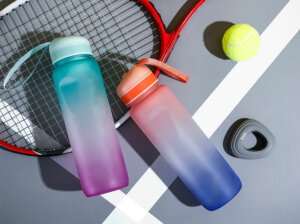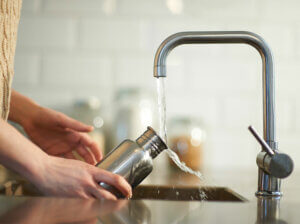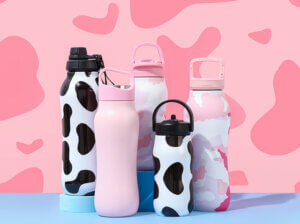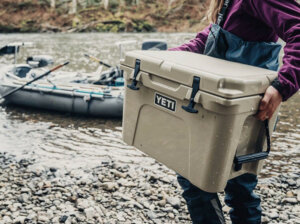Ever wondered about the ins and outs of Bisphenol A (BPA) and its impact on the water bottles you use daily? Join us on a journey through the world of quality inspection as we unravel the mysteries of BPA, explore potential health considerations, and provide you with practical insights on selecting BPA-free water bottles. Let’s dive into the essentials to empower you as informed consumers.
What is BPA?
Bisphenol A (BPA) is a chemical player in the realm of plastics, and understanding its implications is key to making informed choices. Our mission is to demystify BPA, highlight potential health concerns, and guide you toward alternatives that prioritize safety without compromising functionality.
In the consumer-friendly arena, not all BPA-free plastics are created equal. Some may contain substances like phthalates or PVC, while others may utilize derivatives similar to BPA. To guide your choices, let’s break down the selection process into easy steps – decoding labels, understanding recycling codes, and considering temperature specifications to ensure your water bottles are free from unwanted substances.
Which Plastics are BPA-free?
As you embark on the journey of selecting BPA-free water bottles, keep these consumer-focused quality insights in mind:
1-Label Decoding:
Look for labels proudly declaring “BPA-free” or similar assurances.
2-Recycling Code Awareness
Familiarize yourself with the recycling code on the bottle, typically found at the bottom. This code reveals the type of plastic used, guiding you towards safer choices.
Here’s a quick look at the meaning behind each of the plastic recycling numbers 1 to 7.
Recycling #1: PET or PETE
Commonly used in single-use plastics, including plastic water bottles, takeout and grocery food containers, beverage bottles, and condiment containers.
BPA FREE: YES
Recycling #2: HDPE
Typically used in more durable single-use plastic items, including milk jugs, detergent bottles, cleaning products, motor oil, and durable, multi-purpose disposable food containers.
BPA FREE: YES
Recycling #3: V or PVC
It is mostly used to make water pipes, raincoats, school bags, building materials, plastic films, plastic boxes, and other utensils.
BPA-Free Plastics: Yes, but they are considered to contain phthalates, so it’s best to avoid #3 plastics in children’s products.
Recycling #4:LDPE
Plastic bags that can be seen everywhere are mostly made of LDPE.
BPA FREE: YES
Recycling #5:PP
It is often used to make buckets, trash cans, baskets, baskets and food containers for microwave ovens, etc.
BPA FREE: YES
Recycling #6:PS
Due to its low water absorption, it is often used to make building materials, toys, stationery, rollers, as well as cup boxes for drinks in fast food restaurants or disposable tableware.
BPA FREE: YES
Recycling #7: Other (Catchall for all other plastics)
Found in reusable plastic cutlery and drinkware, home decor, bulletproof glass, reusable food containers, and five-gallon water bottles.
BPA FREE: Only polycarbonate products are made with BPA, other #7 plastics are BPA free. These include Tritan, acrylic, melamine, PLA compostable, and plastic blends.
3-Temperature Considerations
Be aware of temperature specifications. If the bottle is dishwasher-safe or can handle hot liquids, it likely indicates a BPA-free composition.
4-Manufacturer Communication
Don’t hesitate to reach out to the manufacturer if you need more details about the materials used in the water bottle. A transparent line of communication ensures clarity.
Alternatives to BPA Plastic:
Meet the consumer-friendly alternatives – BPS, BPF, and their counterparts – thoroughly vetted for safety. These alternatives offer functionality without the health concerns associated with BPA, providing you with peace of mind in your water bottle choices.
- Practical Consumer Tips: In the world of water bottle selection, a few practical tips can guide you:
- Check for Certifications: Look for certifications such as “BPA-free” from reputable sources, ensuring third-party validation of the product’s safety.
- Material Matters: Opt for materials like stainless steel, glass, or BPA-free plastics, minimizing potential risks and maximizing durability.
- Brand Reputation: Consider brands with a reputation for quality and transparency. Reputable companies often prioritize consumer safety and offer detailed information about their products.
- Safe Food Storage Assurance: Beyond BPA elimination, ensure your chosen water bottle is a reliable guardian of food safety. Manufacturers’ assurances on suitability for food storage add an extra layer of confidence.
Where to Find Your Ideal BPA Free Sports Bottle Manufacturer:
Look no further – companies like Everich specialize in producing top-tier stainless steel bottles and plastic water bottles that are 100% BPA-free. With heat resistance and innovative lids, these bottles exemplify the pinnacle of safety and functionality. Any you want to start your water bottle project, please contact us with no hesitation.
Conclusion:
As consumers, your choices matter, and being equipped with the knowledge to select BPA-free water bottles empowers you in making health-conscious decisions. Follow these practical tips, stay informed, and choose products that align with your safety and sustainability goals. Here’s to enjoying your hydration journey with confidence and clarity!




